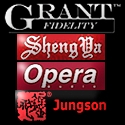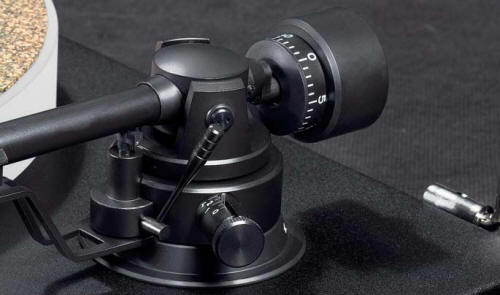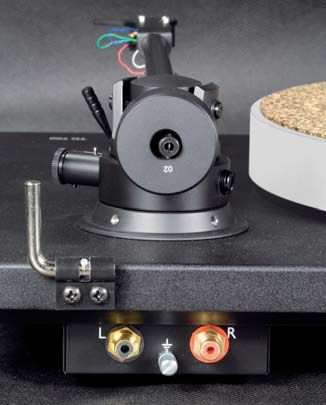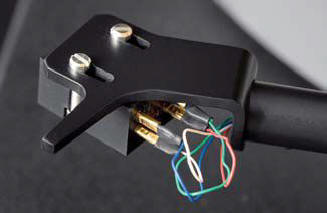
You are reading the older HTML site
Positive Feedback ISSUE
43may/june 2009
thorens
TD700 record player
as reviewed by Ed Kobesky
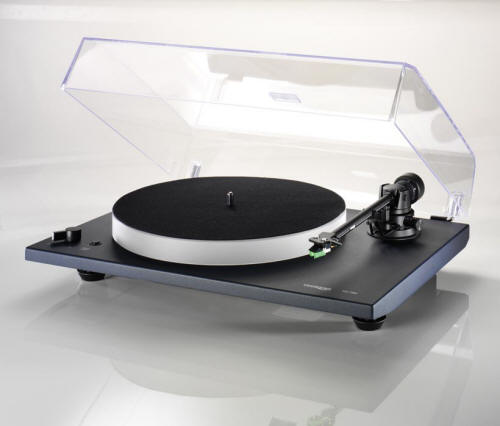
|
ED KOBESKY'S SYSTEM
LOUDSPEAKERS
ELECTRONICS
SOURCES
CABLES
ACCESSORIES
|
Whoa... this is a Thorens? It certainly doesn't look like one. Where's the suspension? Where's the handsome wooden plinth? Where's the metal platter? I mean, to those of us whose idea of Thorens is a 1970s-era TD125 (let alone a TD124), it's virtually unrecognizable. However, though the TD700 bears little outward resemblance to Thorenses (Thorensi?) of old, it's no Rega or Pro-Ject clone. The TD700 is a unique design that is thoroughly sorted and wisely thought through.
The basic design is very simple, and that's a good thing at this price point. An MDF plinth is supported by vibration-damping feet. There are no springs to go out of adjustment. A heavy acrylic platter is belt driven via a plastic subplatter using a basic AC synchronous motor powered by a wall wart. The TP42 manual tonearm looks like one of the new models coming out of the Pro-Ject factory that incorporate magnetic antiskating instead of the miserable hangy-downy fishing weight thing I despise.

Setup took about 45 minutes. The TD700 came very well packaged, wedged in what looked to be handmade, injection foam bits that prove it's made one at a time in relatively small quantities compared to Thorens of old. Though not mentioned in the instruction manual, it's the user's job to fit the three vibration-absorbing feet to the bottom of the plinth before adding the belt and very hefty acrylic platter. A pedestrian-looking wall wart is provided along with a fine pair of interconnects. Unfortunately, a separate ground wire is not included so if you want to swap cables, you'll have to make your own.
Setting the tracking force on the TP42 tonearm is a straightforward if slightly fiddly procedure. The counterweight hangs rather loosely from the arm, probably as a means of decoupling it. As a consequence, it's imprecise, and the difference between 1.8 grams and 2.2 is a scant millimeter or so in either direction. An accidental nudge is enough to throw the tracking weight off. It took me a few teeny tiny movements before I was able to set the recommended 2 grams for the included Audio-Technica AT95 cartridge. Setting the antiskating force was a little odd, too. On the control itself, there are detents marked as 0, 1, 2 and 4 (no 3) but the manual confusingly lists corresponding tracking forces (in nanometers, not grams) for settings 1, 2, 3 and 4 (no 0). I tend to set antiskating by ear and with help from a test record, so this wasn't an issue for me, but if you're a by-the-book type person, consult your dealer.
I have two final and admittedly minor complaints. One, the cueing lever on the tonearm feels flimsy compared to, say, a Rega RB250. Two, I have no idea why the designers didn't replicate the proper Thorens logo on the dustcover. Instead, the word is printed in rather cheesy block letters on a sticker that looks as if it were printed off on somebody's home LaserJet printer. It might have been better just to leave it off entirely. The only reason I even mention it is because the TD700 is otherwise a looker.
Peccadilloes aside, the TD700 is a very nice machine to operate. The speed change lever has a positive feel and a nice thunk when engaged at 33 and 45. The start/stop button is small but actuates cleanly. The massive platter spins to speed surprisingly quickly, almost as fast as a direct drive Technics. In fact, you have to shove on the platter with four fingers to force it to stop. Depending on your school of thought regarding turntable design, this level of torque is either a very good or very bad thing.
Three things struck me immediately at first listen. First, the TD700 is has very quiet backgrounds befitting a player priced well above the entry level. Second, it's also nicely resolving, offering very good separation of individual instruments, clean highs, tight bass and excellent scaling. Third, the AT95e is a surprisingly good cartridge and the TD700 works it hard. Highs were a little sandy compared with more expensive cartridges. Distortion crept in when a record taxed its modest tracking ability. There was also a general graininess and a somewhat plasticky sheen on everything, but not to the point where the TD700 sounded cheap. This is a cartridge that can be used and enjoyed for some time until you save up enough for something better.
The TD700 revealed its other talents over time. Pitch stability was excellent, borderline exceptional, owing perhaps to the torquey motor and heavy, true platter. Surface noise was shoved well into an otherwise quiet background. It tracked complex musical passages with tenacity, and distortion and compression were alleviated to a large degree by switching to a higher-quality cartridge like the Ortofon 2M Blue ($199, reviewed here).
The TD700 has very little in the way of character. It's businesslike and literal. No doubt, this will displease some and delight others. Do not, however, confuse this with being boring. Music comes out well organized, with tight bass and a notably orderly presentation. Details that go unnoticed in more characterful budget tables are easily distinguished here. There is genuine air around voice and instruments. I did not notice any euphonic colorations, only faithful sound reproduction in a decidedly Germanic tradition.
And this brings me to my only real caveat regarding the TD700: be careful what you pair it with. Mate it with too staid a cartridge, and the result can end up faithful but lacking in fun. In fact, the Ortofon 2M Blue—while an excellent technical match—was a bit on the stodgy side in this application. Switching over to one of my Denon moving coils or Audio-Technica moving magnets, on the other hand, lightened things up considerably.
A good test of a $1499 player is comparing it with less expensive models since it should offer a significant improvement. So I pulled out the previous-generation Rega P2, $545 at the time, and an older Rega Planar 3 with Linn arm. Both are very good machines. But the P2 sounded much smaller in scale and didn't reach as high or deep as the Thorens. It also lagged behind in resolution and sounded a bit thuddy. The Planar 3 acquitted itself better, with more inner detail and presence, but it didn't sort out complex passages as well as the Thorens and the music had less weight. Neither came close to matching the TD700's quiet backgrounds.
In its own price range, the Music Hall MMF-7 is of comparable quality, but comes with a much nicer cartridge. The Rega P5 has a superior tonearm and is also a good deal cheaper. Describing the TD700's sound in relation to similarly priced units like these is difficult. It's not at all romantic, nor is it a purveyor of PRAT. It actually sounds, in some ways, like a good CD player but without any digital artifacts. In my book, that makes it an ideal record player. It goes about its business unobtrusively and without obvious strain.
Inexpensive it isn't. But neither is it grossly overpriced. The TD700, like most Thorens upper-line units these days, is made in small quantities, so certain economies of scale simply no longer exist as they did in the 1960s and 70s. In addition, fluctuating exchange rates in recent years have conspired to costs high. As a result, both the Music Hall MMF-7 and Rega P5 provide better value on paper, which may account for why the TD700 sells like hotcakes in Europe but goes largely unnoticed over here.
That's a shame because, as it turns out, the TD700 is classic Thorens in the most traditional sense, even if it may not look like one. The balanced design, in which each part of the system pulls its own weight and nothing really comes up lacking, results in a sensible, stable and hefty record player that goes about its business with the same thoroughly unassuming and unshakable competence as a classic TD124 or TD125. Adding $300 or so for a cartridge and interconnect upgrade adds significant refinement to an already articulate performer. Recommended. Ed Kobesky
TD700
Retail: $1499
Thorens
web address:
www.thorens.com
